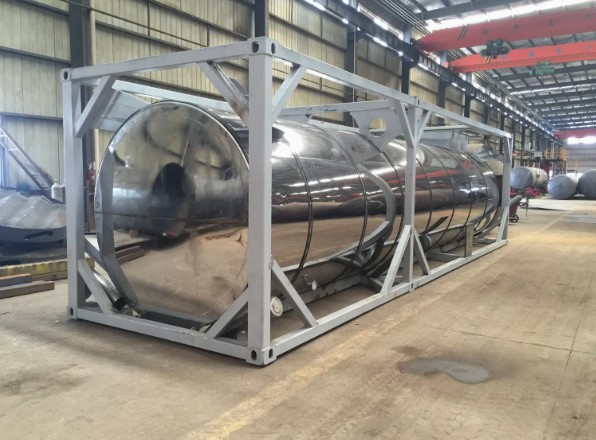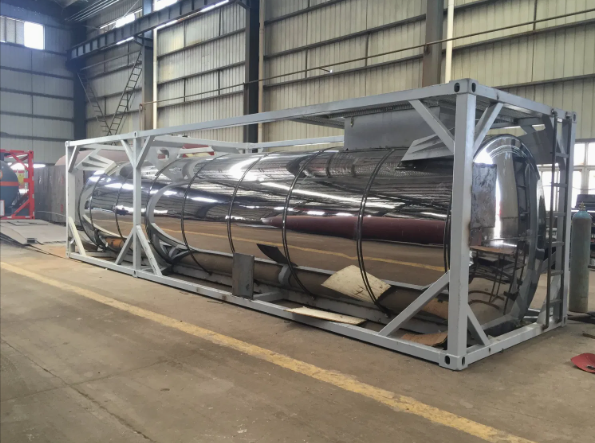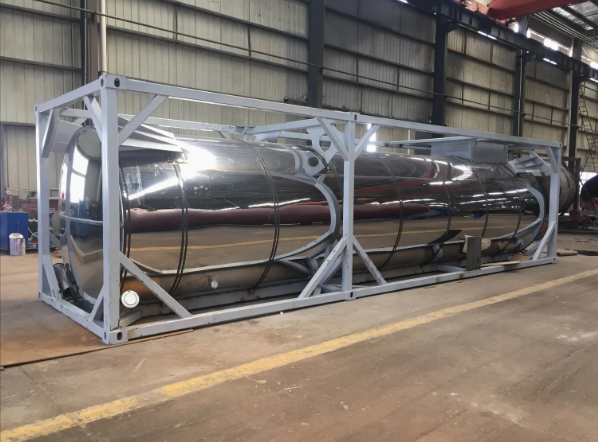Stainless Steel Heated and Insulated ISO Tanks for Industrial Purposes

In the fast-paced realm of industrial logistics and chemical processing, the demand for efficient, reliable, and versatile liquid transportation solutions has never been greater. Among these solutions, stainless steel heated and insulated ISO tanks stand out as the gold standard for transporting temperature-sensitive and viscous liquids across the globe. Whether it’s chemicals, pharmaceuticals, food-grade liquids, or petrochemical products, these specialized tank containers ensure safety, efficiency, and compliance with international standards.
This comprehensive guide explores everything you need to know about stainless steel heated and insulated ISO tanks for industrial purposes, including their features, benefits, applications, design considerations, and how they contribute to optimizing your supply chain.
What Are Stainless Steel Heated and Insulated ISO Tanks?
ISO tanks, also known as tank containers, are standardized containers used for the bulk transport of liquids, gases, and powders. Manufactured according to ISO standards, these tanks can be easily transferred between ships, trucks, and trains, offering seamless intermodal transportation.
Stainless steel heated and insulated ISO tanks are specialized containers designed to transport temperature-sensitive liquids. They feature:
- High-quality stainless steel construction for corrosion resistance and durability.
- Insulation layers to maintain consistent internal temperatures.
- Heating systems (like electric or steam jackets) to prevent product solidification or viscosity increase.
- Insulation and heating ensure the product’s integrity during transit, storage, and handling.
Why Choose Stainless Steel for ISO Tanks?

Stainless steel is the preferred material for industrial tanks due to its numerous advantages:
- Corrosion Resistance: Suitable for transporting aggressive chemicals and food-grade liquids.
- Durability: Long lifespan with minimal maintenance.
- Hygiene and Cleanliness: Easy to clean, fostering compliance with health and safety standards.
- Strength and Structural Integrity: Withstands high pressure and mechanical stresses.
- Recyclability: Eco-friendly material with sustainable benefits.
Key Features of Heated and Insulated ISO Tanks
1. Material Composition
Most heated and insulated ISO tanks are constructed from 304 or 316L stainless steel, offering excellent corrosion resistance, especially when transporting aggressive chemicals or food products.
2. Insulation Systems
Effective insulation is vital to maintaining product temperature. Common insulation materials include:
- Polyurethane foam: High insulating value, lightweight.
- Polyisocyanurate: Enhanced thermal performance.
- Vacuum insulation: For long-distance shipments requiring minimal heat loss.
3. Heating Mechanisms
To ensure product consistency, tanks are equipped with:
- Electric heating jackets: Controlled via thermostats for precise temperature management.
- Steam jackets: Suitable for large-volume heating, compatible with existing plant steam systems.
- Heating coils or pipes: For viscous liquids needing uniform heating.
4. Temperature Control and Monitoring
Modern ISO tanks feature integrated temperature sensors and control panels that allow operators to monitor and adjust the internal temperature remotely, ensuring optimal conditions throughout transit.
5. Safety and Compliance Features
Additional features include:
- Pressure relief valves.
- Emergency venting systems.
- Grounding and bonding for static electricity prevention.
- Compliance with international standards like ISO 1496-3 and ADR.
Benefits of Using Stainless Steel Heated and Insulated ISO Tanks

1. Temperature Maintenance
The primary advantage is the ability to maintain the product’s temperature during long-distance transportation, reducing spoilage or solidification of sensitive liquids.
2. Versatility
Suitable for a wide range of products, including:
- Chemicals requiring precise temperature control.
- Food-grade liquids like dairy, oils, and beverages.
- Pharmaceuticals sensitive to temperature fluctuations.
- Viscous products like bitumen or resins.
3. Operational Efficiency
Intermodal design allows seamless transfer between ships, trucks, and trains, minimizing handling time and costs.
4. Enhanced Safety
Insulation and heating systems prevent product degradation and reduce risks associated with handling hazardous or temperature-sensitive chemicals.
5. Cost-Effectiveness
Durability and reusability lead to lower lifecycle costs, and precise temperature control reduces waste.
6. Compliance and Environmental Considerations
Adherence to international standards ensures legal compliance, and high-quality materials reduce environmental impact.
Applications of Stainless Steel Heated and Insulated ISO Tanks
1. Chemical Industry
Transporting reactive, volatile, or temperature-sensitive chemicals such as acids, solvents, and polymers.
2. Food and Beverage
Shipping dairy, oils, juices, and other perishable liquids that require temperature control.
3. Pharmaceutical Industry
Transporting pharmaceuticals, vaccines, or biological products requiring strict temperature regulation.
4. Petrochemical Sector
Moving viscous products like bitumen, resins, or lubricants that need heating to remain fluid.
5. Agricultural and Fertilizer Industry
Transporting fertilizers and other agrochemicals sensitive to temperature changes.
Design Considerations for Selecting the Right Heated and Insulated ISO Tank
Choosing the appropriate tank involves evaluating several factors:
1. Capacity Requirements
Standard capacities range from 20,000 to 26,000 liters (5,300 to 6,860 gallons). Determine your volume needs based on operational scale.
2. Product Compatibility
Ensure the tank’s material and insulation are compatible with the specific chemical or product being transported.
3. Temperature Range and Control
Identify the required temperature range and precision needed for the product.
4. Heating Method
Select the suitable heating system, considering factors like energy efficiency, control accuracy, and compatibility with the product.
5. Regulatory Compliance
Ensure the tank conforms to relevant standards such as ISO 1496-3, ADR, IMDG, or other regional regulations.
6. Mobility and Intermodal Compatibility
Verify the tank’s compatibility with different transport modes and infrastructure.
Maintenance and Safety Tips for Stainless Steel Heated and Insulated ISO Tanks
Proper maintenance ensures longevity and safety:
- Regular inspection of insulation integrity.
- Checking heating systems and control panels.
- Cleaning and sanitization, especially for food-grade applications.
- Monitoring for corrosion or damage.
- Ensuring pressure relief devices are functional.
Why EquipIntermodal’s Stainless Steel Heated and Insulated ISO Tanks?
Based on the reference EquipIntermodal, EquipIntermodal offers high-quality ISO tank containers designed for demanding industrial applications. Their tanks feature:
- Robust stainless steel construction.
- Advanced insulation and heating systems.
- Compliance with international standards.
- Customizable options for specific customer needs.
- Reliable after-sales support and maintenance.
Choosing a trusted supplier like EquipIntermodal guarantees that your investment in ISO tank technology delivers optimal performance, safety, and durability.
Conclusion
Stainless steel heated and insulated ISO tanks are indispensable tools for modern industries requiring the safe, efficient, and compliant transport of temperature-sensitive liquids. Their robustness, versatility, and advanced features make them the ideal choice for a broad spectrum of applications—from chemicals and pharmaceuticals to food-grade liquids and petrochemicals.
Investing in high-quality ISO tanks not only enhances operational efficiency but also ensures product integrity, safety, and compliance with international standards. Whether you’re expanding your logistics network or upgrading existing equipment, stainless steel heated and insulated ISO tanks are a strategic asset for your industrial operations.
Ready to Elevate Your Liquid Transportation?
Explore premium stainless steel heated and insulated ISO tanks with Intermodal Equipment. Contact us today for customized solutions tailored to your industry needs.
Note: For detailed specifications, customization options, and purchasing inquiries, visit Equip Intermodal’s product page.
Comments
Post a Comment